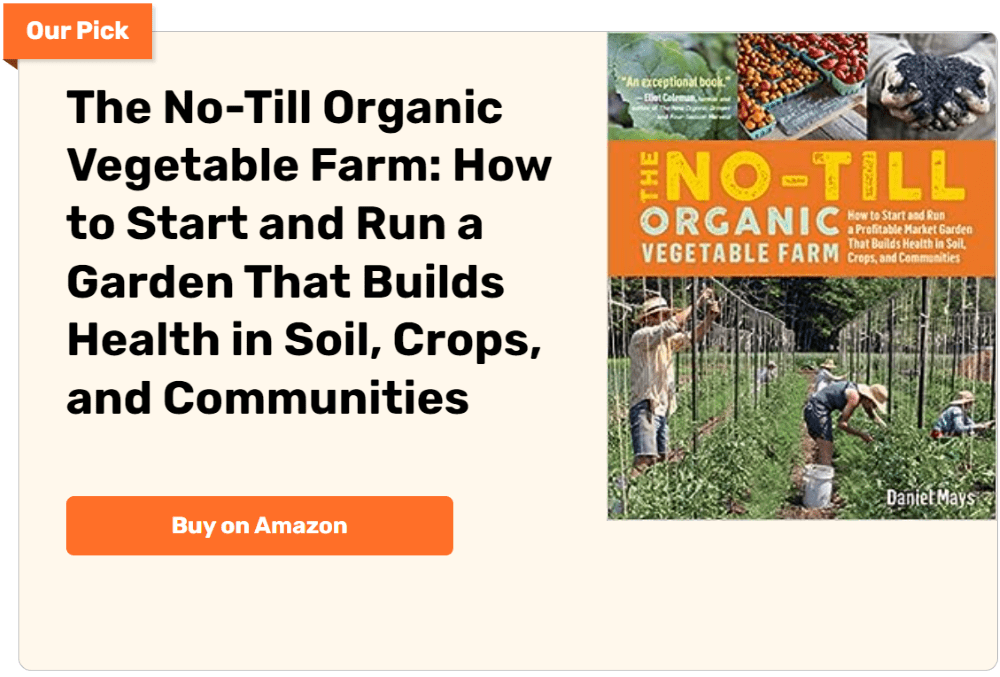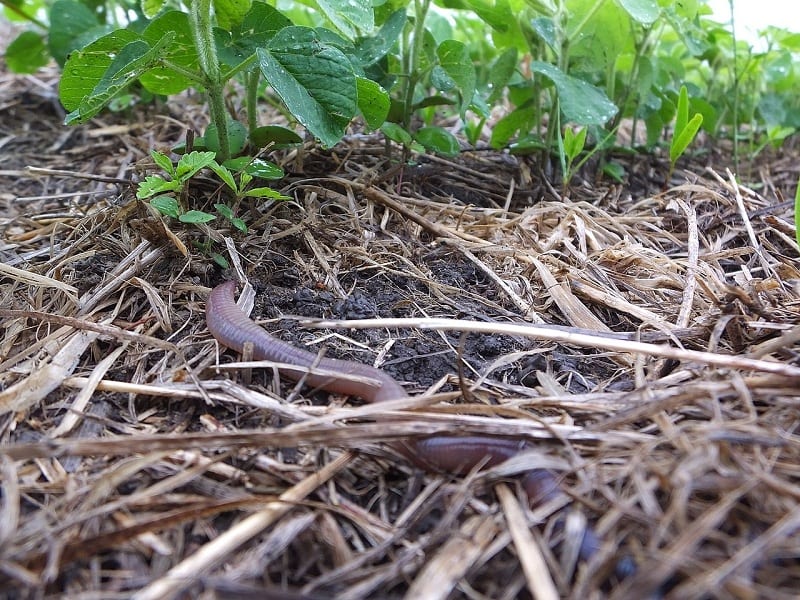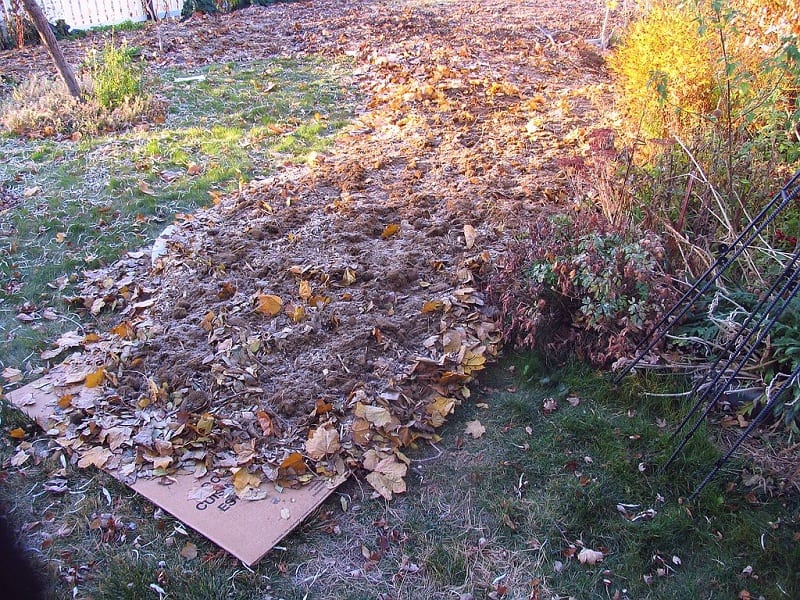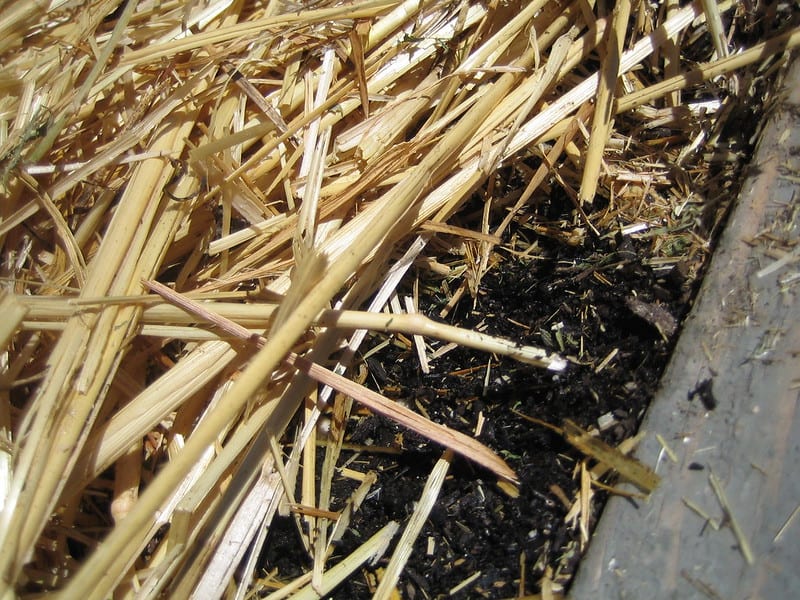Last Updated on May 14, 2025 by teamobn

(Photo: USDA Montana/Flickr)
No-Till gardening is gaining popularity among gardeners across the world.
You till, you work, you harvest the rewards. Farmers and gardeners have done it the same way for thousands of years.
But just how necessary is digging and all that work?

Increasingly, these days, gardeners looking to nature for gardening advice. There is undeniable wisdom in that. In a way, gardening is a means to bring the best that nature has to offer into your backyard.
Clearly, Mother Nature doesn’t use a spade. And that is why the no-till vegetable garden is gaining popularity among so many gardeners across the world.
Why Try No-Till Gardening?
Contents
Have you ever stopped to think of the complex life we disrupt every time we dig? Earthworms, beneficial microorganisms, and fungi live in the soil.
Digging up the soil disrupts the intricate web of life, upsetting the natural processes that lead to healthy, fertile soil.
Leave soil untilled and soil organisms will thrive. That is good for plants and it also allows for a more natural balance between soil pests and their predators.
Are you ready for no-till gardening?

(Photo: USDA South Dakota/Wikimedia Commons)
No-Till Gardening Guide
Choose an area that you want to use for your new garden bed. The spot can be an existing bed, open soil, or even a patch of lawn.
You should not step on the soil. You don’t want to start with compacted soil for your garden.
For this reason, you should design your bed with ample walking and kneeling space. You’ll need easy access to your crops, after all.
You’ll also need some tools and supplies before you begin.
- Shovel
- Wheelbarrow
- Gloves
- Kneeler
- Cardboard boxes without gloss, sheen, or tape
- Compost
- Shredded bark

(Photo: USDA Montana/Flickr)
Steps
Creating a no-till garden requires a little patience, but it’s simple and easy. Just follow the steps below and your garden will be ready within a few months.
- Mark out your growing areas. Make beds no more than four feet wide to avoid the need to step on the growing areas.
- Clear the soil surface of any debris and rocks.
- Mow the grass short or cut weeds to the ground.
- Add a layer four-inch-thick of well-rotted organic matter such as compost. You can also use manure from a trusted supplier.
- Flatten and layout the cardboard boxes over the bed area. Make sure you have generous overlaps as the base for paths. You can cover this base with some shredded bark for a non-slip surface.
Spread compost material over the cardboard until the pile is about 8 to 10 inches high. You can continue adding compost to your no-till bed as the compost breaks down over time. The more, the merrier!
Leave the new bed for several months, or until the compost has broken down into dark, fertile soil. That’s when you can start planting your vegetables!
Benefits of No-Till Gardening for Soil Health
No-till gardening goes beyond convenience. It’s a method that helps restore and protect the soil’s natural structure. By working with the biology of the earth rather than against it, you set the stage for healthier plants and a more resilient garden.
Improved Soil Structure
Traditional tilling breaks up the soil’s structure. This might make planting easier at first, but it eventually leads to compaction and erosion. No-till gardening keeps the natural layers of the soil intact. Plant roots can grow deeper and stronger, and the soil becomes more resistant to compaction over time.
Increased Microbial and Fungal Activity
Healthy soil is alive. When you avoid tilling, you preserve the network of fungi and bacteria that support plant growth. Mycorrhizal fungi, in particular, thrive in undisturbed soil. These organisms form symbiotic relationships with plants, helping them absorb water and nutrients more efficiently. No-till gardening helps these invisible allies multiply and thrive.
Better Moisture Retention
Tilled soil dries out quickly because it exposes more surface area to the sun and wind. No-till gardening creates a natural mulch layer that locks in moisture. As organic material breaks down on the surface, it keeps the soil underneath cool and damp. You’ll water less and still keep your plants healthy.
Reduced Soil Erosion
Soil erosion is a major issue in tilled gardens. Loose soil is more likely to wash away during rainstorms or blow off in dry conditions. When you leave the soil covered and undisturbed, plant roots and mulch protect it. This keeps valuable topsoil in place and prevents runoff from taking away essential nutrients.
Enhanced Nutrient Cycling
When soil is left alone, earthworms and microbes work constantly to decompose organic matter. This natural process returns nutrients to the soil in a form that plants can use. With no-till gardening, you allow this cycle to continue uninterrupted. Over time, your garden becomes more self-sustaining and less dependent on added fertilizers.
Long-Term Soil Fertility
By encouraging natural processes instead of breaking them, you build long-term fertility. The soil becomes richer, darker, and more crumbly. This kind of healthy soil supports stronger, more productive plants season after season.
No-till gardening isn’t just a method. It’s a commitment to soil care that pays off year after year with better yields, fewer problems, and a thriving underground ecosystem.
Common Mistakes When Starting a No-Till Garden
No-till gardening sounds simple—just stop digging, right? But successful no-till gardening takes more than avoiding a shovel. Many beginners run into issues because they overlook how soil biology, layering, and maintenance work together. Knowing what to avoid can save time, effort, and disappointment.
Using the Wrong Mulch Materials
Not all organic matter works well for mulching. Fresh grass clippings or green leaves can mat down and block air flow, leading to mold and rot. Some people also use wood chips directly on vegetable beds, which can tie up nitrogen as they break down. Stick to well-rotted compost, shredded leaves, straw, or aged wood chips for best results.
Skipping the Smothering Layer
If you’re starting on an existing lawn or weedy patch, you need to suppress growth before building your bed. Skipping the cardboard or newspaper layer allows weeds and grass to push through the compost. This is one of the most common early mistakes in no-till gardening. Use plain cardboard without tape or printing, and make sure it overlaps with no gaps.
Compacting the Soil
No-till gardening thrives on loose, biologically active soil. Walking on garden beds compresses the soil and disrupts airflow and root development. When planning your layout, leave wide enough paths between beds. Never step into your growing space. Use boards or kneelers if you need to work from the side.
Starting With Poor Soil or Bad Compost
Some gardeners expect quick results even when starting with tired or nutrient-poor soil. No-till gardening works best when you build it on a base of rich organic matter. Compost should be mature and free from contaminants. Avoid using yard waste that may contain herbicides or diseased plants.
Expecting Instant Results
It takes time for no-till systems to build up soil life and structure. Don’t be discouraged if your first season isn’t perfect. The process improves over time as microbes and earthworms move in. Keep layering and mulching with patience, and you’ll start seeing the benefits by the second season.
Neglecting Ongoing Mulch and Maintenance
A no-till garden isn’t a one-time setup. You’ll need to maintain it with regular mulching and care. As your mulch breaks down, add more layers to keep feeding the soil and suppressing weeds. With consistent upkeep, no-till gardening becomes easier each year.

(Photo: Naturalflow/Flickr)
Best Crops to Grow in a No-Till Vegetable Garden
One of the great things about no-till gardening is how it supports a wide variety of crops. Healthy soil, rich in organic matter and life, makes a perfect growing environment. But some vegetables adapt especially well to no-till methods. These plants take full advantage of undisturbed soil and organic mulches to grow strong and productive.
Lettuce and Leafy Greens
Lettuce, spinach, kale, and other leafy greens love soft, nutrient-rich soil. These shallow-rooted plants thrive in the moist top layers maintained by mulch. Because you don’t dig, their roots grow undisturbed in a stable environment. You’ll get tender leaves with less bolting, especially in cooler months.
Tomatoes
Tomatoes perform beautifully in a no-till vegetable garden. The rich compost base provides all the nutrients they need to produce flavorful fruits. Mulch keeps moisture levels steady and prevents splash-back from the soil, which helps reduce blight and other diseases. As long as the soil is warm enough and you plant deeply, tomatoes will send roots into the rich layers below.
Beans and Peas
Legumes like beans and peas fit naturally into no-till gardening. These crops don’t need rich soil to begin with—they actually help build it. Their roots fix nitrogen, enriching the soil for future crops. Because they have simple growing needs, they’re a smart choice when starting a no-till bed.
Carrots and Root Vegetables
Carrots, beets, and radishes can grow well in a no-till garden if you’ve prepped the soil properly. These crops need a loose top layer without big chunks or clumps. As compost and mulch break down over time, they create the perfect soft medium for roots to expand. Just avoid planting root vegetables in the first season if the soil is still rough or new.
Zucchini and Squash
Large-leaved plants like zucchini and squash are well-suited for no-till gardening. The thick mulch layer protects their roots while helping retain moisture. These plants benefit from steady feeding and minimal disturbance, which is exactly what a no-till system provides. Give them space to sprawl, and you’ll enjoy a generous harvest.
Potatoes
Potatoes thrive when planted under mulch or compost. Rather than burying them deeply, you can lay seed potatoes on the soil and cover them with layers of organic matter. As they grow, keep hilling with more mulch. This method keeps tubers covered and encourages healthy yields without any digging.
Onions and Garlic
These crops grow slowly over months, which makes them great for stable no-till beds. Garlic, in particular, benefits from fall planting into mulched beds. Onions follow easily in spring. Just pull back the mulch to plant, then replace it around the base to hold moisture and control weeds.
No-till gardening gives these crops the conditions they need to grow naturally. With each passing season, your soil becomes better suited for producing vibrant, healthy vegetables. By choosing crops that complement the method, you’ll see the full benefits of no-till gardening take root.
Mulching Instead of Digging
The secret to the success of any no-till garden lies in regular mulching with organic matter. Mulches cover the soil’s surface, protecting it from erosion. Mulching also locks soil moisture and improves soil structure and fertility.
In no-till gardening, mulching replaces digging. Remember to replace old mulch as it breaks down into the soil. That way, you are constantly improving the soil in your new garden.
The best mulches include compost, shredded leaves, straw and
hay, woodchips, grass clippings, and sawdust.

Better Gardening Made Easy
Over time the weeds in a no-till garden become few and far between, says the Old Farmer’s Almanac.
In fact, the mulch works to weaken weeds by smothering them. Because you’re not digging, weed seeds deep in the soil never surface to germinate.
No-till gardening is easier on your back and better for the soil and the crops you grow.
If you’re already a have no-till vegetable garden, we’d love to hear from you. What method do you use? What difference has it made to your gardening? For alternative gardening methods, check out our guide on using garden cloche!








